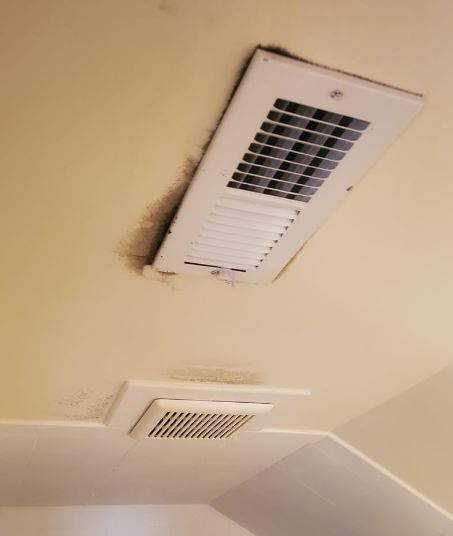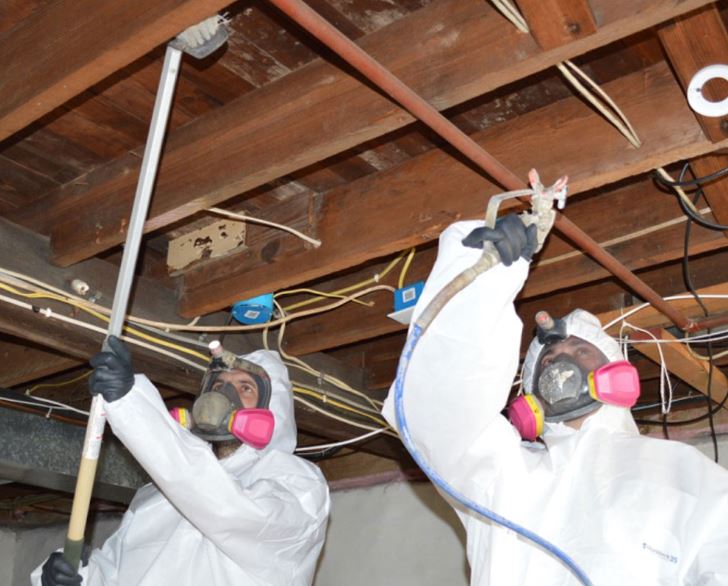
Have you ever wondered why mold containment is a critical step in the mold removal process? If you’re dealing with a mold issue, understanding the importance of properly containing it before removal is essential.
Mold containment refers to the methods and practices used to isolate and prevent the spread of mold during the remediation process. It ensures that mold spores do not contaminate other areas of the property, protecting the health of inhabitants and the integrity of the structure.
Purpose of Mold Containment
During mold removal, containment plays a crucial role in achieving successful remediation. The primary objectives of containment are to prevent the spread of mold spores. And protect unaffected areas of the home, and minimize cross-contamination. By isolating the contaminated area, containment helps maintain a controlled environment. It also safeguards the health and safety of both occupants and remediation professionals.
When you disturb the mold, it releases microscopic spores into your air. These spores can easily travel and settle in other areas, leading to new mold growth and further contamination. Containment measures effectively confine the mold-infested space, preventing spores from dispersing and infiltrating other parts of the home. By containing the mold, the MasterTech Environmental Jersey Shore remediation experts can focus on targeted removal and cleaning. Essentially reducing the risk of mold spreading to unaffected areas.
Types of Mold Containment
Physical Barriers
One common method of containment involves the installation of physical barriers. You can create these barriers using heavy-duty plastic sheeting or temporary walls made of materials like plywood. We strategically place these barriers to enclose the affected area, sealing it off from the rest of the home. This helps prevent the migration of mold spores and minimizes the chances of cross-contamination.
Negative Air Pressure Systems
Mold remediation uses the important containment technique of negative air pressure. This involves the use of specialized equipment, such as air scrubbers or negative air machines, to create negative pressure within the containment area. These machines draw in air from the surrounding environment, filtering it through HEPA filters to capture mold spores and other contaminants. Then, the system exhausts the filtered air outside the home, effectively removing any present mold spores from the contained space.
Air Filtration Devices
In addition to negative air pressure systems, air filtration devices like HEPA (High-Efficiency Particulate Air) filters play a vital role in containment. These devices are designed to trap microscopic particles, including mold spores, from the air. By continuously filtering the air within the containment area, they help maintain clean and safe air quality during the mold removal process.
By implementing a combination of physical barriers, negative air pressure systems, and air filtration devices, professionals can establish a robust containment system. This multi-layered approach actively contains mold spores, minimizes airborne contamination, and protects the unaffected areas of the home.
Remember, experienced professionals should handle containment, a critical aspect of mold remediation. They possess the knowledge, skills, and specialized equipment necessary to implement effective containment measures, ultimately leading to a successful and thorough mold removal process.

I found mold growing in my home. What should I do?
So, you have found mold in your home, what do you do next? Mold is not something that you should attempt to resolve on your own. Mold exposure is dangerous to your health, and the problem can actually become worse if you do not have the correct equipment and training to manage it. Mastertech of Jersey Shore specializes in mold detection and mold damage restoration. We are able to contain the problem, limit further spread and contamination, and repair your mold damage. Call 732-716-2384 or Contact Us to get a free quote for mold removal and mold remediation in Monmouth County and Ocean County.
What Does Mold Need To Grow?
Mold reproduces by spores that are invisible to the naked eye. Mold spores can survive really dry conditions that do not typically support the growth of mold. Even after cleaning and drying water damage, unknown mold spores might still be present, just waiting for the right conditions to grow.
Mold spores need three things to grow: a food source, moisture, and time. Food sources for indoor mold include wood, drywall, insulation, and dust. The moisture for mold to grow indoors often comes from leaks or floods. With food and moisture present, mold growth can begin within 24 hours. This is why timing is so critical in mold cleanup.
The Mold Damage Restoration Process
The first step in mold cleanup is to call a mold damage restoration team. With the proper training, experience, and equipment, MasterTech will be able to address the mold damage quickly and effectively. We will perform an inspection of your property for visible mold and signs of hidden mold.
With the use of various technologies, our technicians can detect hidden moisture and water sources. “Once we identify the moisture source, we will start working to confine the damage to the smallest possible area, physically remove contamination, treat and dry materials to prevent mold return, and carry out or suggest procedures to restore your home and property to its former condition.”


Mold Containment Equipment and Techniques
To achieve effective containment during mold removal, professionals utilize specific equipment and techniques tailored to the unique requirements of each project. These include:
Plastic Sheeting
We commonly use heavy-duty plastic sheeting to create a mold containment barrier around the affected area. We strategically hang it from ceiling to floor, enclosing the mold-infested space and preventing the spread of mold spores to unaffected areas.
HVAC System Sealing
Heating, ventilation, and air conditioning (HVAC) systems can contribute to the dissemination of mold spores throughout a property. To prevent cross-contamination, professionals seal off the HVAC system by blocking vents and ducts with plastic sheeting and utilizing specialized tape or foam to create an airtight seal.
Containment Chambers
For larger mold remediation projects, we may establish containment chambers within the affected area. We construct these chambers using a combination of plastic sheeting, support frames, and zipper entries. This setup allows for controlled access and minimizes the risk of mold spores escaping.
Negative Air Machines
Negative air machines, also known as air scrubbers, are crucial in maintaining containment. These devices create negative air pressure within the contained area, continuously drawing in and filtering the air. HEPA filters within the machines capture mold spores and other contaminants, preventing their release back into the environment.
Containment Plan and Execution
Developing a comprehensive containment plan before initiating mold removal is essential for effective remediation. Professionals follow a systematic approach to assess the affected area, determine the necessary extent of containment, and execute the plan to ensure containment success.
- Assessment: Experts carefully inspect the property to identify the extent of mold contamination and the areas requiring remediation. They evaluate the type of mold, the affected surfaces, and the potential sources of moisture or water intrusion.
- Containment Strategy: Based on the assessment, professionals develop a containment strategy that aligns with the specific needs of the project. This involves determining the appropriate level of containment, selecting the equipment and techniques to be employed, and planning for the proper sealing of the containment area.
- Execution: Once the containment plan is established, remediation specialists implement the necessary measures. This includes installing physical barriers, sealing off HVAC systems, creating containment chambers if needed, and setting up negative air machines or air scrubbers. Proper execution of the containment plan ensures that mold spores are confined, minimizing the risk of cross-contamination during the removal process.
Throughout the mold removal process, containment is regularly monitored to maintain its integrity. MasterTech Environmental Jersey Shore mold removal professionals inspect the barriers, check the functionality of the equipment, and ensure that proper protocols are followed to prevent accidental breaches.
By developing a comprehensive containment plan and executing it with precision, mold remediation professionals can effectively confine the mold, minimize the spread of spores, and protect unaffected areas of the home. This approach ensures a thorough and successful mold removal process while maintaining a safe and controlled environment for both occupants and remediation experts.
Repairing Mold Damage in New Jersey Homes and Businesses
At Mastertech Environmental Jersey Shore, we comprehend the intricate nature of mold and its destructive impacts. Armed with state-of-the-art equipment, comprehensive training, and a wealth of experience, we are proficient in effectively cleaning your home and restoring it to its pre-mold state. The primary fact you need to understand about mold is that, with Mastertech Jersey Shore at your service, your mold worries are in capable hands.
We follow a thorough mold remediation process that begins with a meticulous inspection to identify airborne mold spores. Our team utilizes personal protective equipment as a standard safety measure, ensuring their health isn’t compromised during the restoration efforts.
We then establish proper containment to prevent the spread of these airborne spores to uncontaminated areas of your home. This proper mold remediation containment is crucial in maintaining the integrity of your living spaces while we work.
Contaminated air is meticulously filtered using our HEPA-filtered negative air machine, designed specifically to trap and eliminate harmful mold particles. This step is essential to purify your home environment and ensure the air you breathe is free from mold spores.
Once the area is prepared and contained, our mold remediation process truly begins. We employ specialized techniques and products to kill mold, eradicating it from the root to prevent future occurrences. Your trust in Mastertech Jersey Shore means a mold-free home and a healthier living environment for you and your loved ones.

